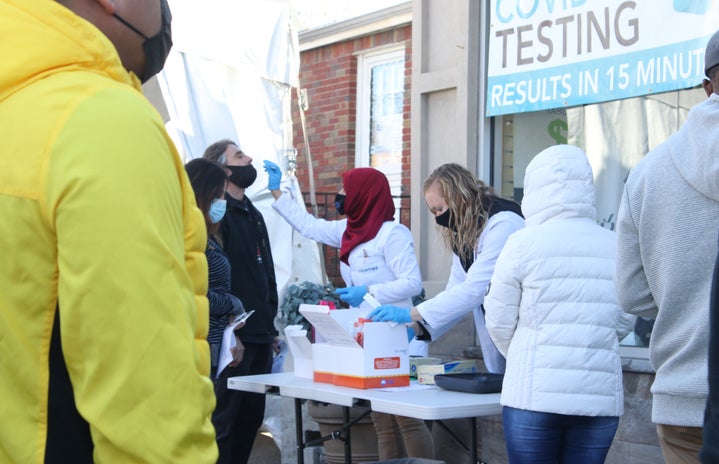When I had COVID-19 at the beginning of this year, I was lucky enough to be asymptomatic and not need any medical attention. However, the challenges I faced when it came to testing made for an incredibly difficult and potentially dangerous situation. From restrictions on rapid tests to overbooked testing sites, I was surprised by just how limited patient support was.
After finding out I was exposed, I had to call over 15 pharmacies in the Seattle and King County area before I found a location that had rapid tests available. In fact, one CVS representative said, “if you are calling for rapid tests, we are out” as soon as they picked up the phone. Another pharmacist that I spoke to over the phone expressed their disenchantment, saying that the supply of rapid tests had been uncertain for the past four months. On top of that, rapid tests were 10 dollars each and most pharmacies mandated that each person could buy only two tests at a time because they were so limited. For me, this meant repeated visits to pharmacies, where I could have infected others or gotten infected myself until I ended up testing positive.
In addition to deficiencies in rapid testing, PCR testing presented difficulties as well. Websites that allowed for booking were buggy and would often crash. When I suspected I had been exposed to COVID-19 in early January, the earliest slots available were over five days away. I was privileged enough to be able to afford an internet connection to determine where to get tested, Ubers to each testing site as well as the cost of rapid tests. I also had a safe and comfortable place to quarantine alone for five days. I cannot imagine how difficult it would be to not have access to these resources or have a proper place to quarantine without putting others at risk.
For a country whose vaccine rollout and subsequent booster shot availability have been running smoothly, for the most part, I was surprised by the lack of infrastructure around testing. If the government had the capacity to give out free vaccines, then they should have also been able to distribute rapid tests the same way earlier in Biden’s term. Putting aside the incredible importance of free rapid tests, providing programs that directly impact people is a great mark on a presidency. It allows people to remember the impact of a term by recalling something tangible.
Biden did inherit the presidency from a president who denied COVID-19, politically polarized the anti-vax issue and outright rejected mask use. With his leadership, he was able to quickly turn the rhetoric around to reflect a more reasoned, science-based response to the pandemic. But with all of Biden and Harris’ promises of listening to the people directly, I really thought changes that came in would directly affect the general public more quickly.
While the free rapid testing initiative is a great step in the right direction, it is riddled with issues when considering the reality of many American families. Not only will many households be unable to test all members, but a four-person household also may not even have enough tests to follow the CDC’s guidelines. The CDC recommends that a COVID-19 positive individual should test themselves after five days of isolation if they have been fever-free for 24 hours or their symptoms have reduced. This means that each person exposed to COVID-19 would take one rapid test to check for infection, and if positive, take a second test on Day five. With each person being recommended to take two tests throughout infection, this does not leave enough tests for a four-person household in which all members test positive. Additionally, more minority groups than white people, who are harder hit by the pandemic, do not live in four-person households and would have to prioritize who gets tested.
Compared to other countries in Europe, Asia, Australia and New Zealand, the United States should be considered developing when it comes to adequate COVID-19 responses. In many European countries, rapid tests are widely available and come at a minimal cost, if not free. Taking a rapid test before a social gathering is a common courtesy in such places and has become a part of daily life. The United Kingdom and Singapore’s rapid test rollout programs include sending seven and six rapid tests per family, respectively, as opposed to America’s four. As Indian biotechnology company Mylab Discovery Solutions’ co-founder Hasmukh Rawal said, with rapid tests from the government “each person becomes a lab. It gives power to the people.” Power to the people is exactly what so many Americans struggling with COVID-19 need right now, and is exactly what I needed when it came to my turn to face the virus.


